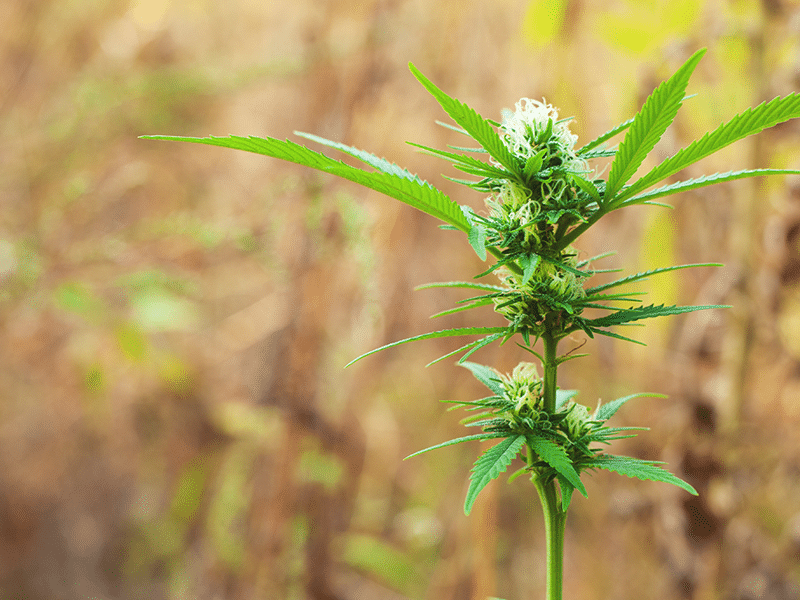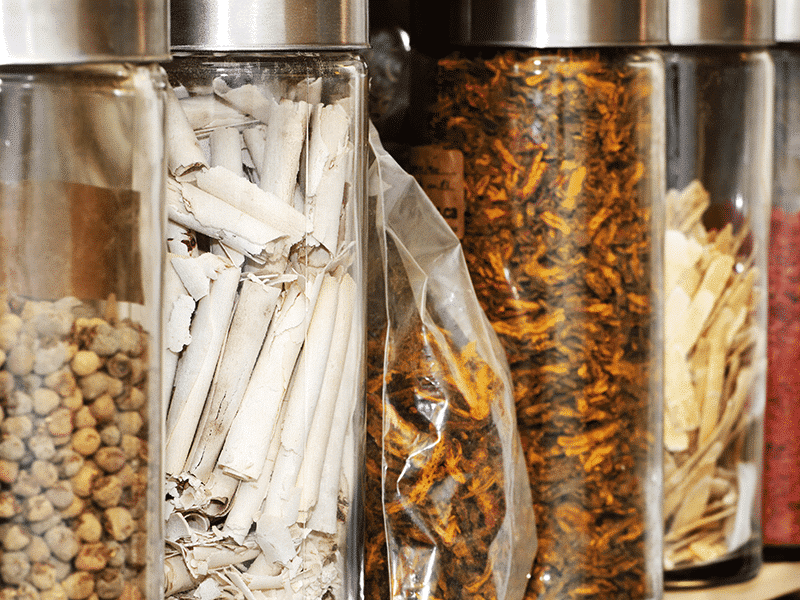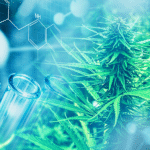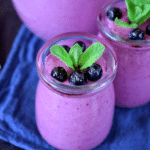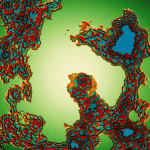Consumers would be forgiven for being skeptical. Unregulated CBD products are sold as cure-alls in strip malls and convenience stores. CBN doesn’t live up to its billing as standalone sleep aid. Sketchy hemp-derived Delta-8 and Delta-9 THC consumables are designed explicitly to evade legal restrictions. But some say the next cannabinoid to grab the attention of health-conscious cannabis users may well be worth a closer look: Cannabigerol or CBG.
CBG is often billed as “the mother of all cannabinoids” because its acidic precursor – CBGA – is also the precursor of tetrahydrocannabinol (THC), cannabidiol (CBD), and other cannabinoids present in the cannabis plant. As the plant matures, most of its CBGA is converted to other molecules, leaving very low levels of CBG in the mature, dried flower – typically below 1% by dry weight. Specially bred strains, however, can produce close to 20% CBG (but little THC) – and that could be a boon for the medical cannabis community.
Potent But Nonintoxicating
CBG was first isolated in 19641 and synthesized in 19712 by “Godfather of cannabis research” Raphael Mechoulam and frequent collaborator Yechiel Gaoni. But it spent the next few decades in relative obscurity. More recent preclinical research has shown that this versatile, nonintoxicating compound is a weak partial agonist or activator of the cannabinoid receptors CB1 and CB2, an antagonist of the serotonin 1A receptor, and an agonist of the inhibitory neurotransmitter GABA. It’s also a PPARy agonist and the only known cannabinoid to function as an agonist at the alpha-2 adrenergic receptor.3
Despite CBG’s unique and promising pharmacology – reviewed in a couple new papers4,5 – research into its effects in humans has been relatively minimal. As recently as a few years ago, CBG-dominant cannabis varietals were almost unheard of, and any producers that wanted the compound could not easily access it. Today CBG is better understood and more widely used than ever before, with unregulated CBG-rich products available online. But CBG still maintains a low profile, even in state-licensed dispensaries.
If recent trends and research findings are any indication, however, that may soon change.
CBG in Practice
Medical cannabis expert and physician Dustin Sulak is among CBG’s believers. He has been treating patients at his two integrative medicine clinics in Maine with CBG-dominant cannabis for about a year. “I’m seeing strong signals of efficacy in anxiety, pain, and sleep disturbance, usually at doses lower than those required when treating similar symptoms with CBD,” Sulak said by email. “Adverse effects are mild and infrequent, with tiredness being the most common.”
Along with his medical practice, Dr. Sulak also runs an educational platform called Healer.com, which sells products – including CBG capsules and oil drops – made from Maine-grown organic hemp. Healer’s website suggests these products offer “calming effects and superior relief from occasional sleeplessness, physical nervousness, ‘flight or fight’ feelings, and … nerve discomfort not addressed by CBD and CBDA.” Also distinguishing it from CBD, which inhibits THC activity at the CB1 receptor, CBG does not diminish the cannabis high.
An article by Sulak on the company’s website outlining the potential benefits of CBG acknowledges that while much of what’s known about cannabigerol is based on cell and animal studies, the compound “[shows] promise for improving conditions including inflammatory bowel disease, other inflammatory conditions, glaucoma, mood disorders, and nerve pain.”
CBG for Pediatric Patients
California-based cannabis physician Bonni Goldstein also occasionally prescribes CBG, including for children suffering from autism-related symptoms like anxiety, hyperactivity, digestive issues, and speech problems. Typically CBG is added to an existing regimen of CBD and THC, she says, starting at very low doses and titrating up until an effect is observed.
Dr. Goldstein, auithor of Cannabis Is Medicine, suspects that many of the positive outcomes she’s observed are related to CBG’s ability to reduce inflammation. In any case, some guesswork is involved given the paucity of available data on the compound’s effects in humans (particularly children) and the wide variability of effects typical of all cannabinoids. She also acknowledges that not all patients see benefits.
“CBG is under-studied, but I can report to you these findings,” she says. “I have seen CBG cause increased [problematic] behaviors in some children with autism, but the minute we see that then we just don’t use it anymore. I’ve also seen that in some of the patients it can be chemovar-dependent. At this point, it’s still trial-and-error for most families.”
In adults, Goldstein has seen CBG help treat anxiety and pain, including in individuals for whom CBD wasn’t effective or only worked at too high of a dose to be affordable.
Survey Data
Sulak’s and Goldstein’s clinical experiences with CBG appear to be reflected in the findings of a survey of 127 CBG users described in the October 2022 issue of the journal Cannabis and Cannabinoid Research.6 Performed by medical cannabis expert Ethan Russo of CReDO Science together with researchers at Washington State University and the University of California in late 2020, it’s the first patient survey of CBG-predominant cannabis use to date.
Responders reported efficacy for anxiety, chronic pain, depression, and insomnia – often surpassing that of conventional medications – without significant side effects or withdrawal symptoms. “People were using it for a wide variety of conditions and almost uniformly found it helpful,” says Dr. Russo, who served as lead author.
It’s worth remembering that this is a survey, not a trial, and the researchers were not able to control or verify what patients were actually taking. They did stipulate that CBG had to represent at least 50% of the total cannabinoid content, but some responders indicated that they were also using CBD, THC, and CBN in smaller quantities.
Russo says a follow-up study is underway to investigate CBG in humans with a higher degree of confidence, but he already predicts that given its apparent efficacy, safety profile, and lower dosage requirements, the compound is poised to break through to the mainstream – hopefully while avoiding some of the hype and commodification (and attendant quality-control issues) of the CBD craze.
“I have felt for a very long time that CBG was an up-and-comer and wasn’t getting the attention it deserved,” Russo says. “We’ve seen a revolution in cannabis therapeutics related to cannabidiol the last ten years, and I think that the same level of excitement is warranted by cannabigerol.”
Nate Seltenrich, Project CBD contributing writer, is the author of the column Bridging the Gap. An independent science journalist based in the San Francisco Bay Area, he covers a wide range of subjects, including environmental health, neuroscience, and pharmacology. © Copyright, Project CBD. May not be reprinted without permission.
Sources
- Gaoni Y, Mechoulam R. The structure and function of cannabigerol, a new hashish constituent. Proc Chem Soc. 1964;1:82
- Gaoni Y, Mechoulam R. The isolation and structure of delta-1-tetrahydrocannabinol and other neutral cannabinoids from hashish. J Am Chem Soc. 1971;93:217–224.
- Nachnani, Rahul et al. “The Pharmacological Case for Cannabigerol.” The Journal of pharmacology and experimental therapeutics vol. 376,2 (2021): 204-212. doi:10.1124/jpet.120.000340
- Jastrząb, Anna et al. “The Origin and Biomedical Relevance of Cannabigerol.” International journal of molecular sciences vol. 23,14 7929. 19 Jul. 2022, doi:10.3390/ijms23147929
- Calapai, Fabrizio et al. “Pharmacological Aspects and Biological Effects of Cannabigerol and Its Synthetic Derivatives.” Evidence-based complementary and alternative medicine : eCAM vol. 2022 3336516. 8 Nov. 2022, doi:10.1155/2022/3336516
- Russo, Ethan B et al. “Survey of Patients Employing Cannabigerol-Predominant Cannabis Preparations: Perceived Medical Effects, Adverse Events, and Withdrawal Symptoms.” Cannabis and cannabinoid research vol. 7,5 (2022): 706-716. doi:10.1089/can.2021.0058
Recommended Readings
Cannabis: A Medicinal Treasure Trove with Ethan Russo, MD
A neurologist speaks with Project CBD about CBG, cannabinoid acids, and the global CBD phenomenon.
The Future of High-CBD Hemp
New developments in CBD genetics are about to shake up the cannabis industry.
Cannabis: Gateway to Herbal Medicine
Compounds in dozens of plants interact with the endocannabinoid system.



